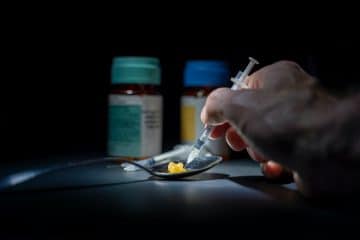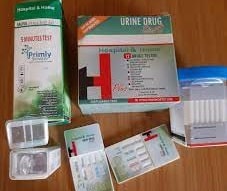Quick Facts About Methamphetamine
| A | B |
|---|---|
| Name | Methamphetamine, short for "Meth" |
| Brand Name | Sold legally under the brand, Desoxyn |
| Type of Psychoactive Medication | Amphetamine |
| Controlled Substance Classification | Schedule II |
| Forms | Crystal form (crystal meth), powder, pill |
| Routes of Administration | Smoking, snorting, injecting, oral ingestion |
| Effects | Euphoria, increased energy, alertness, appetite suppression, increased heart rate |
| Uses | Legally used for the treatment of attention deficit hyperactivity disorder (ADHD) and, in some cases, obesity but illegally used to increase alertness, energy, and activity |
| Risks | Addiction, cardiovascular issues, dental problems, psychosis |
| Treatment | Behavioral therapy, medication-assisted treatment, and support groups |
| Street Names | Crystal, Meth, Ice, Glass, Tina |
| Names in Other Languages | • Spanish: Metanfetamina • French: Méthamphétamine • German: Methamphetamin •Italian: Metanfetamina • Russian: Метамфетамин (Metamfetamin) • Japanese: メタンフェタミン (Metanfetamin) • Chinese (Mandarin): 甲基苯丙胺 (Jiǎjī Běnbǐng àn) • Arabic: الميثامفيتامين (Almīthāmfitāmīn) |
| Cost | Varies depending on purity and location, but typically between; • 20 USD - 100 USD per gram • 16921.60 NGN - 84608.00 NGN per gram • 18.39 EUR - 91.97 EUR per gram • 16.04 GBP - 80.18 GBP per gram • 144.97 CNY - 724.86 CNY per gram |
False positive for methamphetamine testing is not very common, however, it is possible. A wrong positive for methamphetamine testing can spell disaster for an individual’s education and career, thus the need to know what to avoid when the time for urine testing in your school or place of work is close.
Methamphetamine testing is usually done to ascertain if an individual has been taking the drug, commonly called meth or other related drugs, such as cocaine, that can be easily abused. When done, and a level of more than 20% methamphetamine is discovered in the urine sample, it means the individual has been consistently using a drug that contains the compound. However, there are cases of false positives for methamphetamine, and they can be as a result of using some medications, or the insensitivity and inaccuracy of the testing kit.
In this article, we will point out the common causes of a false positive for methamphetamine and how you can avoid them. We will also discuss how you can test positive for methamphetamine, even when you have not taken meth.
But first…
Methamphetamine and how they work
Methamphetamine is a prescription drug that is used to treat some serious medical conditions, such as obesity – because it suppresses appetite, Attention-Deficit Hyperactivity Disorder (ADHD), Narcolepsy, among others. It is a central nervous system stimulant and causes its users to experience euphoria, hence its strict control and classification as a Class I drug.
Crystal methamphetamine, commonly called meth, is a glass-like form of the drug that is illegally available on the streets and is used to get the CNS stimulation that its abusers long for. It is usually produced in makeshift laboratories in Mexico and they find their way into the United States of America, where they are sold for cheap prices.

Methamphetamine is usually taken orally by swallowing the pills, or by smoking it from a pot. It can also be ingested by snorting the powder, or dissolving the powder in water or alcohol, and injecting it into veins.
It works by increasing the amount of dopamine the brain produces; consequently, improving its users’ moods and pleasure. Its effect set on fast and wears off quickly, prompting its users to continuously use dose after dose to get that feeling of “high”.
There are 2 isomers of methamphetamine – the d-methamphetamine and the I-methamphetamine. Methamphetamine found in prescription drugs is mostly D-methamphetamine and in high doses, can cause the feeling of euphoria by increasing the brain’s dopamine level and interfering with the Central Nervous System. The I-methamphetamine, on the other hand, can be available over the counter as it is commonly used to treat nasal congestion. Its effect on the central nervous system is minimal but it has some effect on the sympathetic nervous system.
What is a False Positive Methamphetamine Test?
A false positive methamphetamine test is a drug test result that shows you have amphetamine in your urine sample when you have not been using any illegal medication or drug. A false positive methamphetamine result only tells whoever is looking at the result slip that you have amphetamine in your system, and they probably think you are on meth. However, many medications metabolize to form amphetamine, making it present in your urine.
To truly test positive for methamphetamine in your system, your urine sample must contain about 500ng per milliliter of the urine sample. This result shows that the individual whose urine sample is tested has had a drug that metabolized to amphetamines in the past three days. Usually, some of these drugs are available over-the-counter and may be needed for some medical conditions. However, most of the drugs that contain methamphetamine, Phentermine, and amphetamine, are Class I drugs, that is, they are unavailable for distribution.
Related Article: Facts About S 900 Xanax Pill You Should Know
An individual with 500ng of amphetamine in 1ml of urine sample is probably abusing their prescribed medication or obtaining the drugs illegally. However, there is a possibility this is untrue for some individuals.
Both isomers of methamphetamine metabolize to form amphetamine. Lab results do not readily differentiate between the I-methamphetamine and the D-amphetamine, even though they influence the Central Nervous System differently.
Causes of False Positive for Methamphetamine
False positive results for methamphetamine occur about 10 to 15 times out of 100 tests and it is usually due to one major reason, Insufficient Laboratory Tests for Confirmation, although other reasons can be added.
Generally, there are two methods for drug testing using urine samples; they are the definitive and presumptive drug monitoring tests. The presumptive drug monitoring or testing shows the possibility that an individual’s specimen contains a contraband drug or drug class, or not. Its result is given as negative or presumptive-positive, and with it, you can’t distinguish between a false-positive for methamphetamine or a true-positive result.
The definitive drug test identifies the specific drug and metabolite in the urine sample and is often used to confirm the outcome of a presumptive drug test.
The major cause of false positives for methamphetamine is the use of only presumptive drug testing, and the disregard for the more sophisticated and costlier definitive drug test.

Other causes of false positive results for methamphetamine tests include:
- The use of over-the-counter medications that contain methamphetamine
- The use of prescription drugs that contain methamphetamine
Conclusion
A methamphetamine test is usually done to test if an individual is using more than the recommended dosage of prescription methamphetamine. Other times, it can be used as a blanket test to see if an individual uses illegal drugs, such as meth and cocaine. However, its result can be false by passing an individual off as a drug addict when they’re not.
Laboratories should perform definitive drug tests to ascertain an individual’s drug dependence and abuse status, as it may cost them their jobs.

Ayomide is a fiction and non-fiction writer. A lover of science and everything mysterious that surrounds it, he seeks out new information to keep his interest alive.
The content is intended to augment, not replace, information provided by your clinician. It is not intended nor implied to be a substitute for professional medical advice. Reading this information does not create or replace a doctor-patient relationship or consultation. If required, please contact your doctor or other health care provider to assist you to interpret any of this information, or in applying the information to your individual needs.


